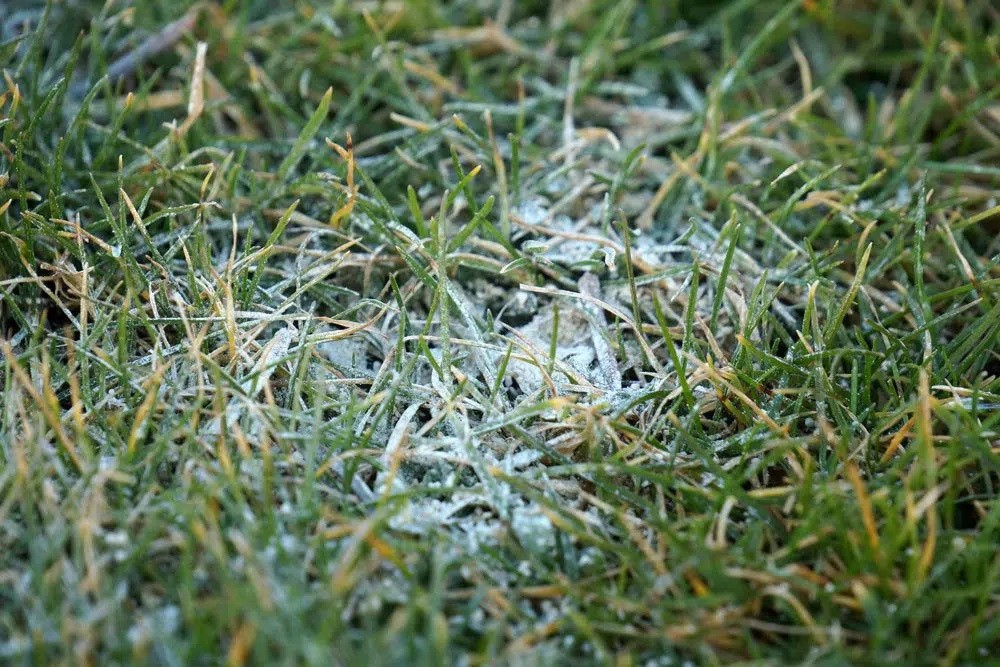Whether lime helps against moss and clover in the lawn depends on the cause. We reveal the advantages and disadvantages of the care measure here.
- acidic soil favors moss
- Lime can help against the growths
- Determination of the cause is necessary as a first step
- application should be done at the right time
- even distribution and good watering are crucial
Contents
pH value
Before lime is used on the lawn, the pH of the soil should be determined. The test required for this can be carried out independently. However, it is also possible to take a sample of the soil and have it tested at a DIY store with a garden center or a nursery, for example.
Beforehand, of course, it should be asked whether this service is offered. If the test is to be carried out yourself, test strips can also be purchased in DIY stores or online. Alternatively, a test device can be used. These are already offered at very low prices and can also be used for indoor plants, for example.
Tip: The pH of the lawn soil should be between 5.5 and 7.5. This makes the substrate slightly acidic to neutral. If the value drops below or rises above this, appropriate measures are required.
Moss
Moss thrives best when the following criteria are met:
- Soil slightly acidic to acidic
- little light
- lack of nutrients in the substrate
The advantage of this is that the reasons are manageable in number and therefore the cause of the spread can be easily found. A test as well as checking the location is already sufficient to find the trigger.
If the pH is below 5.5, the application of lime can quickly remedy the situation. Fertilizing or creating better lighting is recommended in other cases.
Lime
If moss has spread on the lawn and too low a pH is responsible, lime can be used to neutralize it. However, there are a few factors that are critical in this process. These are:
- even distribution
- correct dosage
- sufficient watering after application
- paying attention to your own safety
To achieve this, the following steps are necessary:
- Safety glasses and a mouth guard should be worn to ensure your own safety. This will prevent the lime from getting into the eyes or respiratory tract.
- Liming should be done when the lawn has not just been fertilized or will be fertilized soon.
- Ideally, the lawn should be scarified before the lime is applied so that better penetration is possible.
- A spreader truck allows for even distribution. In addition, the effort, especially in terms of time, is very small. The output should be set to dispense 150 to 200 grams per square meter.
- Following the distribution, the area must be well watered. This will prevent chemical burns on the roots.
Tip: After carrying out the measure, another test of the pH is advised, if necessary, to apply more lime and achieve the desired result.

Clover
Unlike moss, clover varieties thrive primarily on alkaline soils. Therefore, liming the area is not recommended. However, a test of the pH value should also be carried out so that appropriate countermeasures can be taken.
If the value is too high, it is necessary to acidify the soil. The following agents are recommended for this purpose:
- Oak leaf compost
- Ferrous sulfate
- Coffee grounds
- Rainwater
- Sulfur
- Grape marc
- Peat
Tip: Using appropriate fertilizers and not using hard tap water can help prevent an excessively high pH level, and thus clover.
Prevention and removal
Whether the lawn appears unsightly due to moss or clover, in any case the unwanted plants cannot be removed by liming or fertilizing. Only their further spread can be prevented. However, there are appropriate measures that can prevent them.
- Testing: Regular analysis makes it possible to counteract problems quickly.
- Mowing: Frequent mowing ensures that the grass plants branch out and grow more densely. This gives mosses and weeds less of a chance to spread.
- Dethatching: Removing lawn thatch aerates the soil, improves nutrient and water penetration and can prevent waterlogging.
- Fertilizing: The stronger the grass plants are, the better they can hold their own against other growth. An adapted fertilization therefore has a preventive effect against spreading.
Tip: Choosing a hardy grass variety and matching the substrate beforehand also helps to keep mosses, clover and weeds at bay.
Frequently asked questions
What lime should be used on lawns?
Special lawn lime or garden lime are suitable for increasing the pH. In any case, it is important to pay attention to the manufacturer’s instructions.
Can the lawn be walked on after liming?
Walking on it should be avoided to prevent irritation or even burns. Pets should also be discouraged from playing or even rolling on the lawn. After repeated watering and about a week, normal use is possible again.
Is it advisable to mow the lawn before liming?
Yes, mowing the lawn beforehand is recommended. This also applies to fertilizing or acidifying the soil. This allows the respective agents to penetrate the soil more easily.


